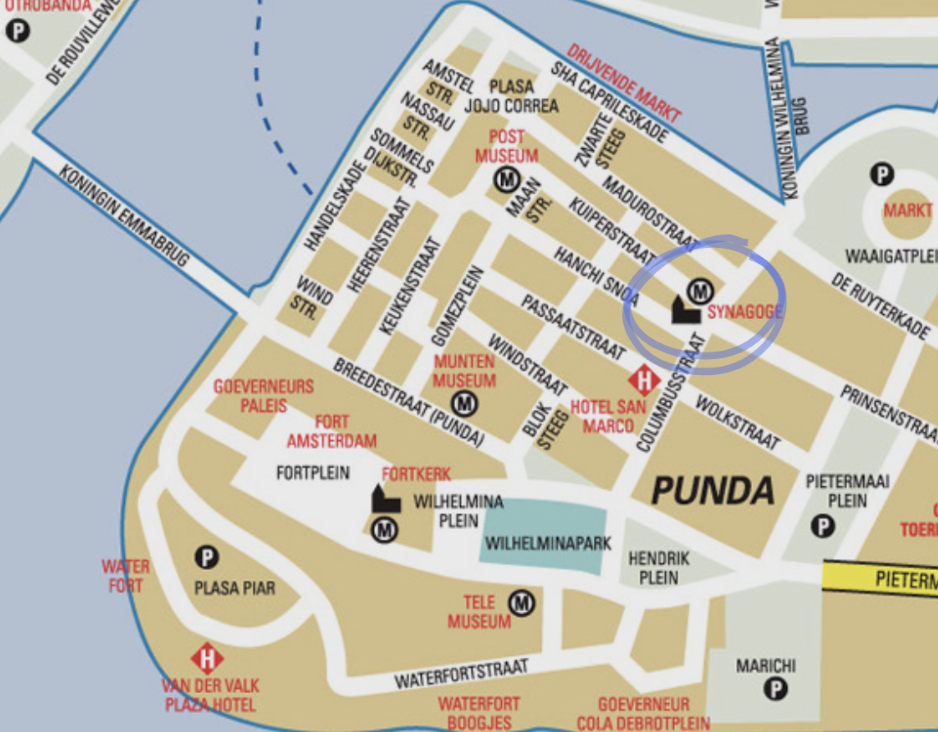Buildings
We all know and love the blue, pink, yellow, green, and orange houses of Willemstad. There is a popular story that the governor of the island of Curacao, Albert Kikkert, owned a stake in a paint factory and ordered that the buildings in Willemstad be painted in different colors to boost sales of the factory's products. However, this story is actually a myth and has been debunked by historians.
In reality, the tradition of painting buildings in different colors predates Governor Kikkert's time on the island. The Dutch colonizers who first settled on Curacao in the 17th century were already painting their buildings in bright colors, although the practice became more widespread in the 19th century. The governor ordered that the white-washed buildings be painted in different colors to help sailors differentiate between them as they approached the port.
The use of color is not just a matter of aesthetics. The tropical climate of Curacao can be harsh on building materials, and the constant exposure to sunlight, salt, and wind can cause buildings to deteriorate quickly. The use of brightly colored paints, which contain pigments that help to reflect sunlight and protect the buildings from weathering, became a practical solution to this problem.
Head to Pietermaai home to wealthy Dutch merchants and has many well-preserved colonial-era buildings. Today, the district is being restored and revitalized, and visitors can see the colorful architecture and walk along the seaside promenade.
Other amazing building to see on the island include:
Mikve Israel-Emanuel Synagogue: This synagogue was built in 1732 and is the oldest synagogue in continuous use in the Western Hemisphere. It was built by Spanish and Portuguese Jews who fled persecution in Europe and settled in Curacao. The synagogue features an impressive interior with ornate decorations, a sand-covered floor, and a magnificent chandelier.
Fun fact: The synagogue street’s name, Hanchi Snoa, is a combination of Hanchi, the local Creole word for alley, and Snoa, an abbreviation of Esnoga, the traditional Judaeo-Spanish (Sephardic) word for synagogue.)
Fort Amsterdam: built in 1635 by the Dutch West India Company and was used as the administrative center of the island. Today, the fort houses the governor's office and is one of the oldest fortresses in the Caribbean. Visitors can tour the fort and learn about its history.
Fort Nassau: built in 1797 on a hill overlooking the entrance to Willemstad's harbor. It was used to protect the city from attacks by foreign powers. Today, the ruins of the fort can be visited, and there is a restaurant on the site with spectacular views of the city and harbor.
Plantation houses: There are several plantation houses that date back to the colonial period. These houses were built by wealthy Dutch plantation owners and were used to oversee the production of crops such as salt, aloe vera, and citrus fruits. Many of these houses have been restored and are open to visitors, offering a glimpse into the island's colonial past.
Landhuis Knip: built in the 17th century and is one of the oldest on the island. Today, it serves as a museum, showcasing the history of the plantation and the people who lived and worked there. Visitors can see the original furniture and artifacts, as well as learn about the harsh living conditions of the enslaved people who worked on the plantation.
Rif Fort: This fort was built in the 19th century to protect Willemstad from naval attacks. Today, the fort has been restored and transformed into a shopping and entertainment complex, with restaurants, bars, and boutiques.

